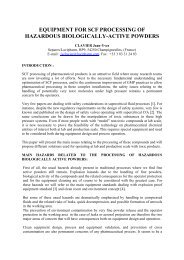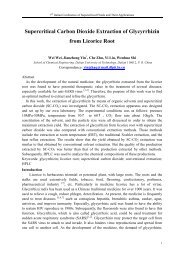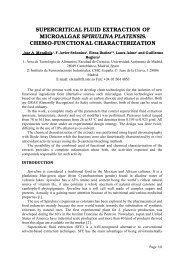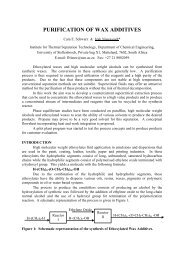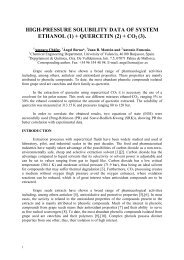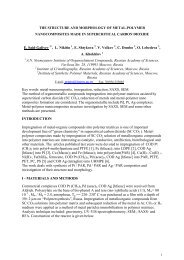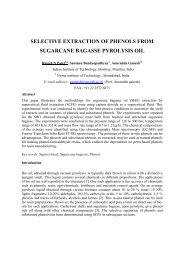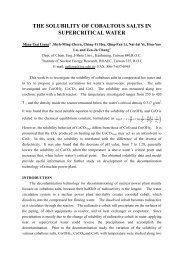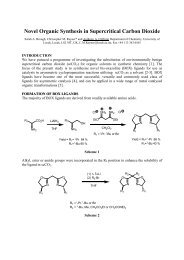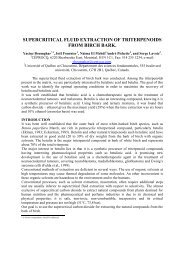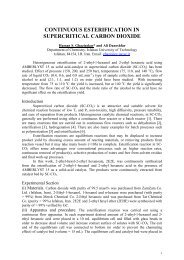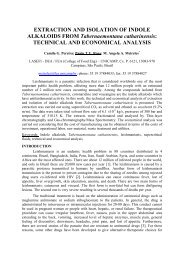REGENERATION OF GAC-F400 BY SCCO2: EFFECT OF ... - ISASF
REGENERATION OF GAC-F400 BY SCCO2: EFFECT OF ... - ISASF
REGENERATION OF GAC-F400 BY SCCO2: EFFECT OF ... - ISASF
You also want an ePaper? Increase the reach of your titles
YUMPU automatically turns print PDFs into web optimized ePapers that Google loves.
In the micropores, the pore diameters would be of comparable sizes to the adsorbate<br />
molecular diameter, hence the adsorption mechanism is based on multidimentional<br />
interactions [5] forming bonds that are much harder to break, the factor that is<br />
responsible for irreversible adsorption no matter how powerful the regenerating solvent.<br />
Table 2 below shows the initial carbon loadings based on the caprolactam solutions that they<br />
were prepared from:<br />
Initial solution<br />
concentration, ppm<br />
Initial <strong>GAC</strong>-<strong>F400</strong><br />
loading, mg<br />
Mass desorbed , mg % desorbed in the<br />
run<br />
500 193 157 82.5<br />
1000 288 202 70.3<br />
1500 325 224 69.05<br />
2000 536 244 68.9<br />
Table 2: Carbon loadings and mass of caprolactam desorbed, which are correspondent to various initial<br />
solution concentrations.<br />
CONCLUSIONS<br />
The present work has led to the following conclusions:<br />
• Supercritical CO 2 can be successfully used to regenerate <strong>GAC</strong>-<strong>F400</strong>, originally used<br />
to remove caprolactam from aqueous waste streams, by recovering up to 70% of the<br />
caprolactam. The latter can be recovered if required, to 100% purity.<br />
• Both the rate of desorption and maximum amount desorbed favoured higher operating<br />
pressures (= 200 bars).<br />
• The optimum desorption temperature is 25ºC for pressures = 200 bars, and 40ºC for<br />
pressures > 200 bars.<br />
• The rate of desorption increases with the solvent (regenerant) flowrate and initial<br />
solute concentration in the effluent stream.<br />
• Complete economic assessment of the process is required before selecting the<br />
optimum overall operating conditions.<br />
REFERENCES<br />
[1] HE, C-H, GAO, Y-H, YANG, S-H & EDWARDS, D.W., J. Loss Prev. Proc. Ind., vol. 17,<br />
2004, 195.<br />
[2] AL-DURI, B. PhD thesis, the Queen’s University of Belfast, 1988.<br />
[3] TOMASKO, D.L., HAY, K.L., LEMAN, G.L., ECKERT, C.A., Fluid. Env. Prog., vol.12<br />
(3), 1993, 208.<br />
[4] ANTERO,L & MATTI, J., J. Chem. Eng. Data, vol. 41, 1996, 1418.<br />
[5] YANG, X.Y. & AL-DURI, B., Chem. Eng. J., vol 83, 2001, 15.



